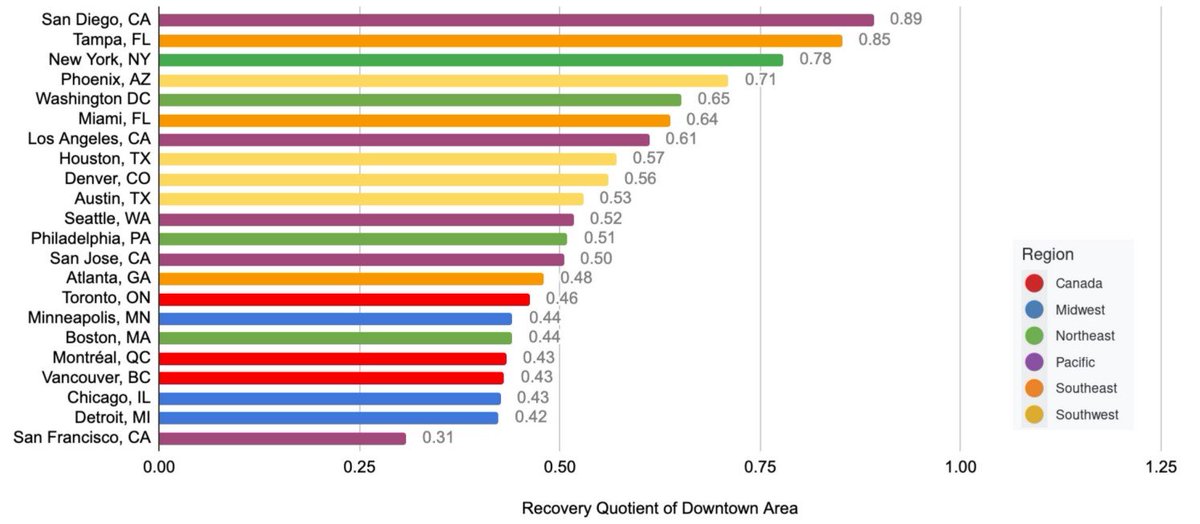1. Rustbelt Revivals - fascinating new paper by Enrico Moretti & others (via @lydiadepillis) on why & how deindustrialized Rustbelt regions recover: nber.org/papers/w31948
2. Lots there but here are my main takeaways ...
3. Across the US and Europe more than a third (34%) of deindustrialized Rustbelt metros recovered better than pre-deindustrialization.
4. German metros, and to some extent other European metros recovered more than US metros.
5. To me this is evidence of the efficacy of what Henry Ergas long ago called deepening as opposed to shifting strategies for technology-based economic development.
6. Shifting strategies, as their name implies, emphasize shifting away from incumbent industries like steel or chemicals or automotive in favor of new high-tech industries like semiconductors, computers, biotech etc.
7. Shifting is the kind of strategy deployed by the US and also can be seen in how US regions try to cope with deindustrialization. Boston shifting from textiles & boot and shoe industries in the 1950s & 60s to new high tech sectors. ...
8. Pittsburgh doing something similar shifting from steel and heavy industry to high-tech software robotics etc.
9. Deepening is the approach favored by Germany - by applying new technology to upgrade incumbent industries.
10. The study also finds that human capital ( share of college grads) is a big factor in successful adaptation and recovery of deindustrialized Rustbelt communities.
11. I see this as pointing in the direction of what I term industry-transforming industrial and technology policy. And this is something that the US Rustbelt & Heartland are ripe for now. And it is enhanced by the shift to place based industrial policy.
12. A new suite of technologies - electrification, software, robotics, self-driving, connected cars, smart mobility - now auger for the transformation of incumbent industries in the US Heartland/Rustbelt.
13. They also suggest that it makes sense to increasingly work to fuse regional R&D capabilities at universities & grow & scale college towns.
14. I have written more on this,
Here:
And here:
creativeclass.com/reports/Michig…
heartlandforward.org/case-study/ame…
Here:
And here:
creativeclass.com/reports/Michig…
heartlandforward.org/case-study/ame…
15. And have a shorter piece coming in @CityLab soon.
• • •
Missing some Tweet in this thread? You can try to
force a refresh

 Read on Twitter
Read on Twitter





